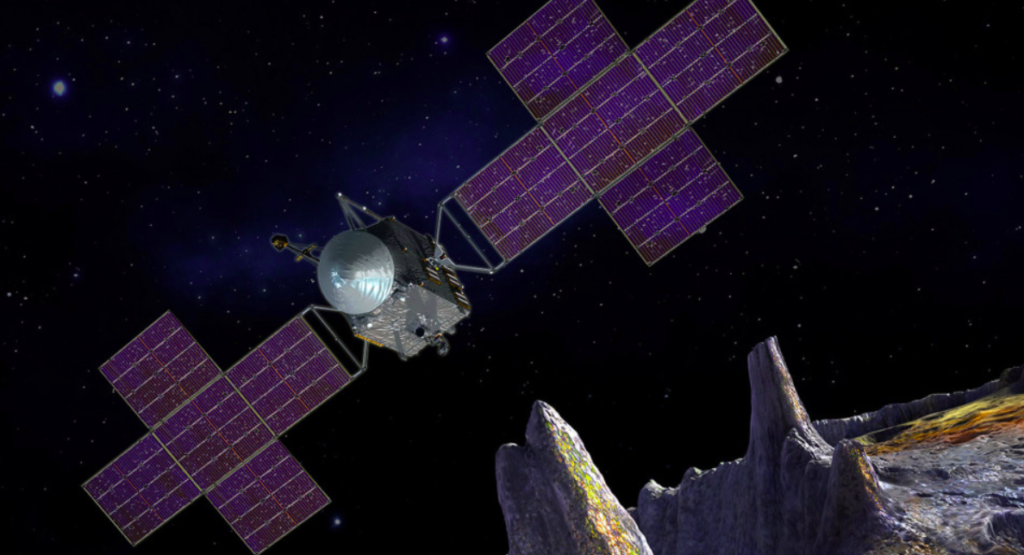

NASA and SpaceX successfully launched a mission on Friday morning that was on the verge of failure. The Psyche spacecraft is currently headed toward the named asteroid, but last year, errors at the Jet Propulsion Laboratory (JPL) nearly brought the mission to an end. After JPL steered it back on course, the probe is currently traveling to investigate one of the solar system’s most intriguing known asteroids.
At 10:19 a.m. EDT on Friday, Psyche blasted out from Earth aboard a SpaceX Falcon Heavy rocket. This rocket is the most potent in SpaceX’s current fleet and is built from three upgraded Falcon 9 core stages. The side boosters descended and made a successful landing not long after setting Psyche on its journey. As is customary for Falcon Heavy flights, the center stage was used up and not recovered.
According to NASA, the probe has successfully established two-way contact over the Deep Space Network complex in Canberra, Australia, and is in a safe orbit. All systems are operating as planned, but Psyche has switched to safe mode as it waits for orders from mission controllers on the ground.
August 2029 is when Psyche is expected to arrive at 16 Psyche, assuming the remainder of the mission proceeds as planned. Given that practically all of this large 140-mile (220-kilometer) asteroid is made of metal, some have hypothesized that it may represent the exposed core of a failed protoplanet. Psyche makes up around 1% of the main asteroid belt’s total mass on its own. Even if this item is not a planetary core, it is still an intriguing opportunity to investigate it closely. Nicola Fox, associate administrator of NASA’s research Mission Directorate, said she is “excited to see the treasure trove of science Psyche will unlock as NASA’s first mission to a metal world.”
Psyche will use solar electric propulsion, commonly referred to as a Hall-effect thruster, to reach the asteroid belt. This engine ionizes xenon atoms and shoots them out of a nozzle to create thrust, running at up to 4.5 kW. With just 922 kg of fuel, Psyche can travel 2.2 billion miles (3.6 billion kilometers) to its goal thanks to this incredibly efficient mechanism.
Psyche is scheduled to assist NASA in testing a new laser communication system while it travels to the asteroid belt. When Psyche is on the opposite side of the moon in roughly three weeks, the first test will occur. This will be the first high-data-rate laser communication test conducted at such long ranges by NASA. But all of the Psyche mission data will reach Earth through the Deep Space Network; this is only a demonstration of the technology. According to NASA’s Space Technology Mission Directorate (STMD) Prasun Desai, “launching with Psyche is an ideal platform to demonstrate NASA’s optical communications goal to get high-bandwidth data into deep space.”
NASA’s Discovery Program, which has produced spacecraft like the Mars InSight lander and the Kepler Space Telescope, is now on its fourteenth mission, Psyche. The Marshall Space Flight Center of NASA is in charge of running the program.